The %yield of ammonia as a function of time in the reaction N2(g)+3H2(g)⇔2NH3(g).ΔH<0at(p,T1) is given below. If this reaction is conducted at (P1T2), with T2>T1 the % yield of ammonia as a function of time is represented by
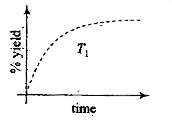 Solution in Malayalam
Solution in Malayalam
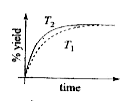

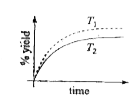
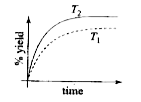
The correct Answer is:C
N2(g)+3H2(g)⇔2NH3ΔH<0 (exothermic). For exothermic reaction, high temperature facoures the reaction in backward direction i.e. yield of reaction decreases.
Topper's Solved these Questions
- CHEMICAL AND IONIC EQUILIBRIUMBOOK - BRILLIANT PUBLICATIONCHAPTER - CHEMICAL AND IONIC EQUILIBRIUMEXERCISE - Level - III
19 Videos
- CHEMICAL AND IONIC EQUILIBRIUMBOOK - BRILLIANT PUBLICATIONCHAPTER - CHEMICAL AND IONIC EQUILIBRIUMEXERCISE - Level - III (Numerical type)
8 Videos
- CHEMICAL AND IONIC EQUILIBRIUMBOOK - BRILLIANT PUBLICATIONCHAPTER - CHEMICAL AND IONIC EQUILIBRIUMEXERCISE - Level -I
54 Videos
- CHEMICAL BONDINGBOOK - BRILLIANT PUBLICATIONCHAPTER - CHEMICAL BONDINGEXERCISE - LEVEL-III ( Linked Comprehension Type )
12 Videos
Similar Questions
Starting with 1 mol of O2:2 mol of SO2, the equilibrium for the formation of SO3(g) was established a certain temperature. If V is the volume of the vessel and 2x is the number of moles of SO3 present, equilibrium constant for the reaction 2SO2(g)+O2(g)⇔2SO3(g) would be :
View SolutionIn an experiment starting with 1 mole of ethyl alcohol, 1 mole of acetic acid and 1 mole of water at 100∘C, the equilibrium mixture on analysis shows that 54.3% of the acid is esterified. Calculate the equilibrium constant of this reaction.
View SolutionThe volume of the reaction vessel containing an equilibrium mixture in the reaction,
SO2CL2(g)⇔SO2g+Cl2(g) is increased. When equilibrium is re-established:
View SolutionIn an ionic bond, the cation tends to polarize the electron cloud of the anion by pulling electron dens towards itself. This causes development of covalent character in the ionic bond because the electron dens gets localised in-between the nuclei. The tendency of the cation to bring about the polarization of the anion expressed as its polarizing power. The ability of ion to undergo polarization is called its polarisability. The polarising power of a cation or an anion is decided on the basis of Fajans' rules.
The ionic conductance of which of the following is the highest?
View SolutionThe % yield of ammonia as a function of time in the reaction, N_(2)(g)+3H_(2)(g)hArr2NH_(3)(g)'DeltaHlt0 at (p,T_(1)) is given below If this reaction is conducted at (p,T_(2)) , with T_(2)gtT_(1) the % yield by of ammonia as a function of time is represented by
View SolutionThe prepation of SO3(g) by reaction SO2(g)+12O2(g)⇔SO3(g) is an exothermic reaction .If the preparation follows the following temperature -pressure relationship for % yield , then for temperatures T1,T2andT3 the correct option is:
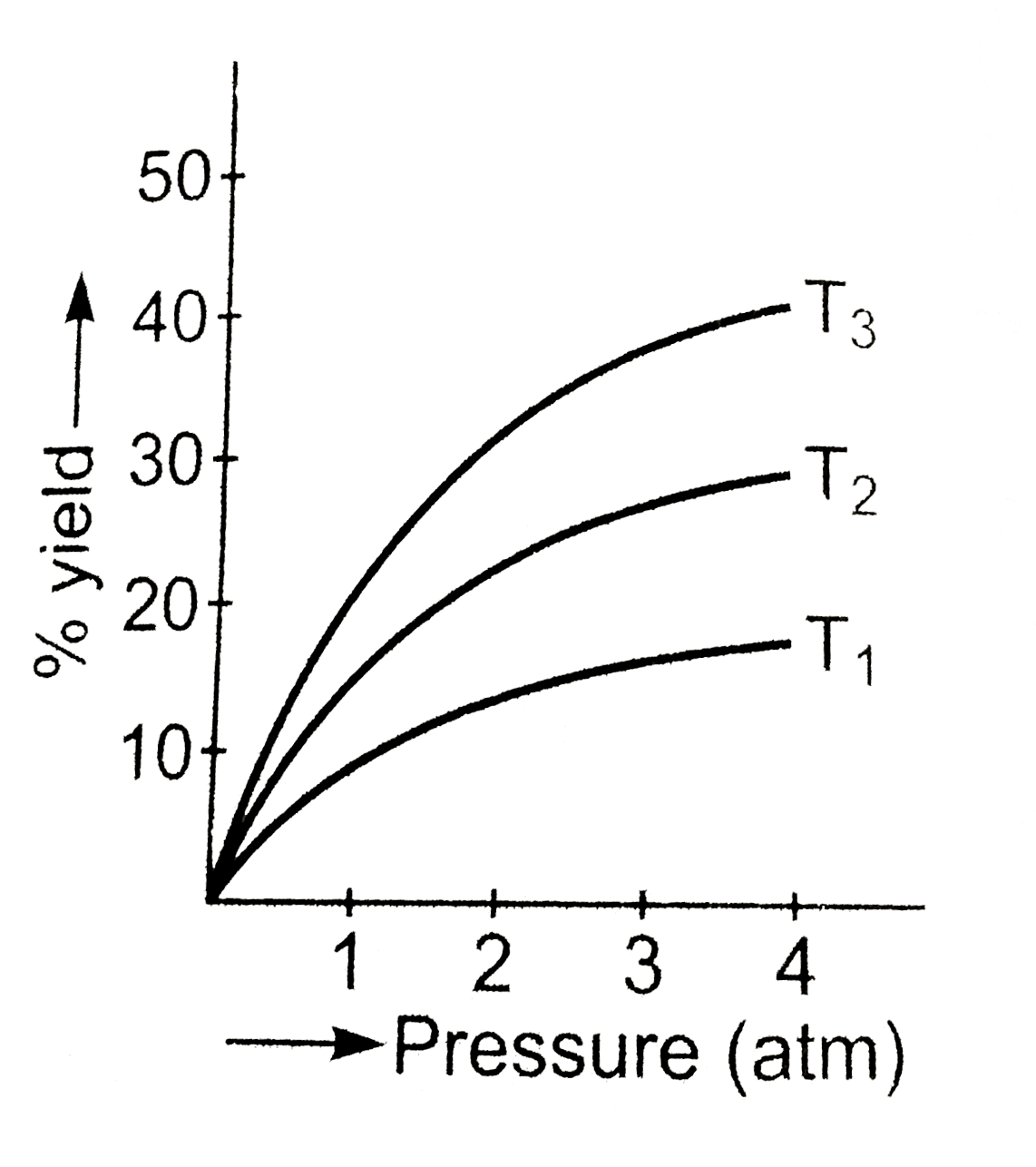
View SolutionExamine the following plots and predict whether in (i) P_(1) lt P_(2) "and" T_(1) gt T_(2) , in (ii) T_(1) = T_(2)ltT_(3) , in (iii) V_(1) gt V_(2), "in" (iv) P_(1) gt P_(2) "or" P_(2) gt P_(1)
View SolutionThe % yield of ammonia as a function of time in the reaction N2(g)+3H2(g)⇔2NH3(g),(g)ΔH<0 at (P,T1) is given below
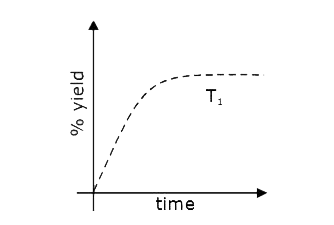
View Solutionअभिक्रिया, N2(g)+3H2(g)↔2NH3(g), ΔH<0 में अमोनिया के प्रतिशतता उत्पाद (% yield) की समय (time) पर निर्भरता (p,T1) पर नीचे दर्शाई गई है
यदि यह अभिक्रिया (p,T2) पर की जाए, जहाँ T2>T1, अमोनिया के % उत्पाद की समय पर निर्भरता प्रदर्शित करता है
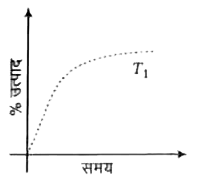
View SolutionThe % yield of Ammonia as a function of time in the reaction N2(g)+3H2(g)⇔2NH3(g),ΔH<O at (P,T) is given below:
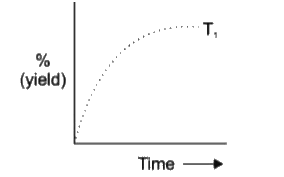
If this reaction is conducted at T2>T1, then plot the % yield of NH3 as a function of time on same graph
View SolutionAt a certain temperature (T1) ,some hydrazine (N2H4) gas is placed in a sealed flask where the following equilibrium is established.
3N2H4(g) K1 ↔ 4NH3(g)+ N2(g) .ΔH∘ >0 If the temperature is increased to T2 some ammonia gas also decomposes as
2NH3(g) K2 ↔ N2(g)+ 3H2(g), ΔH∘ > 0 .What would be observed as temperature is increased from T1 to T2 ?
View SolutionThe prepation of SO_(3)(g) by reaction SO_(2)(g)+(1)/(2)O_(2)(g)hArrSO_(3)(g) is an exothermic reaction .If the preparation follows the following temperature -pressure relationship for % yield , then for temperatures T_(1),T_(2)andT_(3) the correct option is:
View SolutionThe % yield of ammonia as a function of time in the reaction, N_(2)(g)+3H_(2)(g)hArr2NH_(3)(g)'DeltaHlt0 at (p,T_(1)) is given below If this reaction is conducted at (p,T_(1)) , with T_(2)gtT_(1) the % yield by of ammonia as a function of time is represented by
View SolutionThe percentage yield of ammonia is a function of time in the reaction N2(g)+3H2(g)⇔2NH3(g),△H<0
at (pT1) is given below
If this reaction is conducted (p1T1) with T2>T1, the percentage yeild of ammonia as a function of time is represented by.
View SolutionIf T1 is the period of the function f(x)=e3x−[x]andT2 is the period of the function g(x)=e3−[x]([⋅] denotes the greatest integer function ), then (a) T1=T2 (b) T1=T23 (c) T1=3T2 (d) None of these
View SolutionFor a reaction A to P , the plots of [A] and [P] with time at temperatures T_(1) and T_(2) are given below. If T_(1) gt T_(2) , the correct statements is (are): (Assume DeltaH^(Theta) and DeltaS^(Theta) are independent of temperature and ratio of ln K at T_(1) to ln K at T_(2) is greater than T_(2)/T_(1) . Here H,S,G and K are enthalpy, entropy, Gibbs energy and equilibrium constant, respectively).
View Solution
